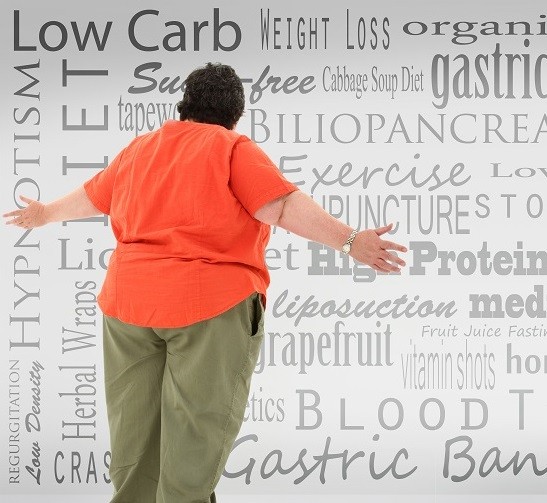Most of the people wait for their doctor to warn them about their weight before acting. However, our body has plenty of mechanisms that try to keep its condition stable (known as homeostatic mechanisms) and whenever an imbalance occurs it sends warning signs about the changes that happen.
Thus, whenever our body weight exceeds the normal BMI (Body Mass Index) levels, our body sends messages showing that we need to lose weight. [1]
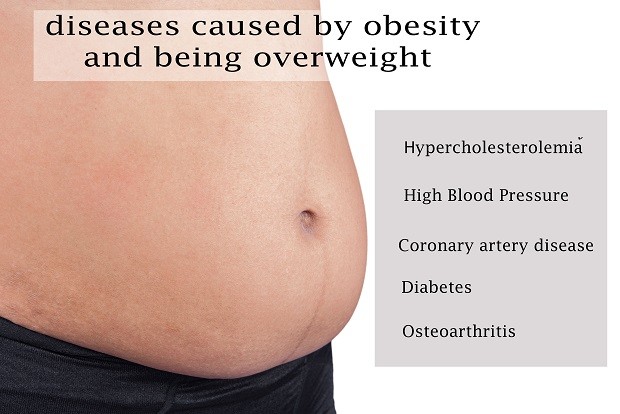
According to “The United Kingdom Health and Lifestyle Survey”, regular physical activity and regular consumption of fruits and vegetables combined with small quantity of alcohol consumption and no smoking, can lead to several public health benefits. [2]
Additionally, there is a recently published study (2017) highlighting that improving muscular fitness plays a key role in reducing cardiometabolic risk in youth. [3]
Furthermore, being fit and having a normal BMI is not only a matter of health but it affects the self-confidence and emotions of everyone.
In a Dutch study, among overweight and obese persons, more than 2 out of 5 men and women were not satisfied with their body weight status and almost all the obese participants desired to be thinner. [4]
There are several signs-symptoms linked with weight gain, some of them are mild and do not attract our attention, but some others are severe and worry us.
The signs-symptoms of weight gain should mobilise us to consult a weight loss expert.
SEVERE BODY SYMPTOMS
Some of the severe body symptoms caused by weight gain include:
– Fruity- smelling breath combined with nausea, vomiting and confusion. These symptoms show an untreated hyperglycaemia and are linked with ketoacidosis, which is a life- threatening condition. [5]
Fluid retention
Symptoms related to fluid retention may occur in patients with chronic heart failure.
Chronic heart failure is a syndrome characterized by symptoms including fatigue, dyspnoea and cardiac dysfunction or structural abnormality affecting the appropriate function of the ventricle of the heart to fill with or eject blood.
Chronic heart failure patients should limit their sodium intake and fluid intake to 1+1/2 Litter / day.
Reduced dietary sodium intake is a lifestyle modification that can contribute significantly in the improvement of the syndrome. [6]
Day time sleepiness. It might be partly due to the sleep apnoea caused by increased body weight, that affects the quality of sleep.
Sleep apnoea is a condition that increases the risk of heart failure, arrhythmias and hypertension. However, there are additional pathways linking weight gain and daytime sleepiness. [7-8]
These severe symptoms highlight the impact that weight gain may have on our health and that a weight loss expert can contribute in avoiding such life-threatening conditions.
Mild Body Symptoms
Depression and weight gain
An American study, reported that obese individuals may be at greater risk for depression. On the other hand, depression and its symptoms may increase the risk of weight gain and obesity.
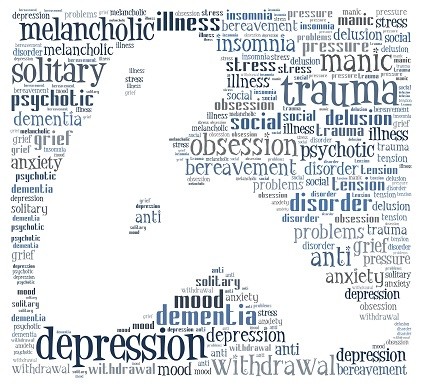
Obesity is a stigmatised condition and this study showed that among women, increasing depressive symptoms were associated with more weight gain across the lifespan.
However, results were different for men who experienced depressive symptoms.
Men were initially heavier in younger adulthood but gained less weight over time than the ones who did not experience such symptoms. [9]
Polycystic ovary syndrome
Polycystic ovary syndrome is a disorder related to menstrual irregularities and elevated androgen (men hormone) levels. Additionally, it is a condition characterised by small ovarian cysts.
This condition can lead to excessive hair growth, microcysts in the ovaries, infertility and menstrual changes.
According to a 2013 review the features of polycystic ovary syndrome may be reversible with weight loss and exercise. [10]
Constipation
Almost 1/20 of Americans suffer from constipation and estimations highlight that less than 3% of men and 6% of women meet dietary fibre intake recommendations.
There is evidence suggesting that greater dietary fibre intakes reduce weight gain. [11]
Usually people who gain weight eat empty calories like simple carbohydrates-sugar which do not provide considerable quantities of fibres, resulting to constipation whilst might experience serious hormonal imbalances.
Additionally, obese people tend to move less than the average, deteriorating the problem of constipation.
Lack of energy
Eating empty calories (food and drinks) from solid fats and/or added sugars usually gives you a boost of energy but very soon this energy declines because they are quickly digested.
Thus, very soon you feel hungry and without energy to complete your daily schedule efficiently.
Eating high amounts of foods like cakes, sodas, pastries and others is a characteristic of people who gain weight and despite their high caloric consumption, they feel lack of energy and complain about being tired. [12]
Cellulite
Cellulite is known as a modification of skin topography evident by nodularity and skin dimpling and mainly concerns females of all ages.
White skin women tend to be more prone to cellulite compared to Asian women.
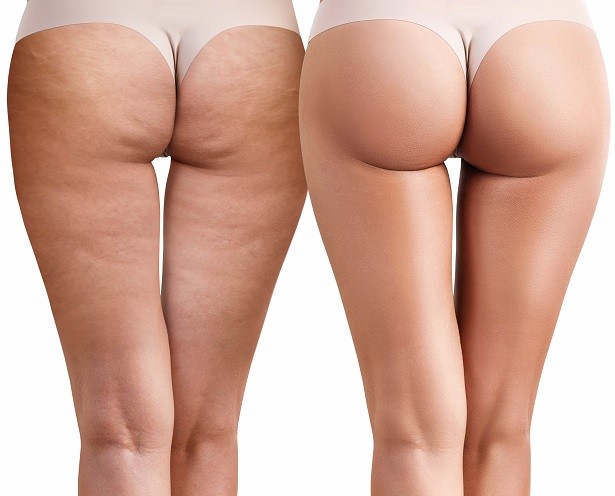
Cellulite is usually detected on abdomen, lower limbs and the pelvic region.
Obesity and high-carbohydrate consumption and hormonal imbalances are among the causal factors of cellulite.
Additionally, a sedentary lifestyle promotes the appearance of cellulite in younger women. [13]
Skin stretch marks
Skin stretch marks belong to the skin changes that are usually found among overweight or obese patients.
Stretch marks are a sign of inflamed and ruptured connective dermal tissues and when you gain weight this change results in skin stretching.
Skin stretch marks can be found in areas where fat deposits are greatest, like hips, thighs, lower back, abdomen, shoulders, knee, upper arms and chest.
One of their characteristics is that they tend to be distributed symmetrically on both sides. [14]
Do you want to achieve a weight loss, fitness or a health goals?
Contact Jazz Alessi by clicking on this link now, here !
Acanthosis nigricans is a skin condition characterised by symmetrically distributed, thickened, velvety, brown-to-black lesions.
These lesions are usually found in skin folds and creases on the back and sides of the genital area, groin, neck and axilla. [15]
According to a 2007 study, acanthosis nigricans is a common disorder in overweight youth.
Specifically, acanthosis was found among overweight youth and was associated with glucose homeostasis abnormalities. [16]
Weak immune system
According to the World Health Organization, the cost of obesity in the United Kingdom is estimated to be around £20 billion per year, taking lost productivity and sick days into account. [17]
In a 2010 study, Harvey and his colleagues, concluded that there was a positive association between employees’ body mass index (BMI) and the number of days’ work missed due to sickness absence.
Their data demonstrate that obese people are more susceptible to infections and take longer to recover. [18]
Hypertension
Hypertension in youth is associated with obesity.
Some racial/ethnic minorities have a high prevalence of obesity, with a shift in the body weight distribution toward extreme obesity.
According to a 2013 study all obese youth should be screened for hypertension. [19]
Additionally, adult obese individuals have a more than 3-fold increased likelihood of having hypertension.
Almost 3/5 of hypertensive adults are >20% overweight.
It has been estimated that more than 3/5 of hypertension in adults may be associated to adiposity. [20]
High Blood sugar levels and Type 2 Diabetes
According to a 2011 study, elevated BMI and waist circumference were significantly associated with type 2 Diabetes.
However, not all patients with type 2 diabetes are obese and a significant number of obese individuals do not have diabetes, but most of the type 2 diabetics are overweight or obese.
Moreover, there are studies reporting that a significant weight-loss could lead to a decreased incidence of progression to type 2 diabetes. [21]
Do you want to achieve your weight loss, fitness or health goals?
Contact Jazz Alessi by clicking on this link now, here !
WEIGHT LOSS FOR WOMEN AND MEN
In 2014 researchers conducted a study about the sex differences in the composition of weight gain and loss in overweight and obese adults.
At 2 months of a weight loss program, men had lost twice as much weight as women and three times more fat free mass than women.
However, between 2 and 6 months of the weight loss program, the rate at which weight was lost decreased and the % of fat free mass of weight loss decreased to almost equal levels in men (7 %) and women (5 %). [22]
According to a systematic review of 2015 that analysed the effectiveness of weight loss interventions and the difference between men and women: 11 out of the 58 included studies directly compared weight loss in men and women and indicated a significant sex difference.
Ten of them concluded that men lost more weight compared to women.
On the other side, women also lost a significant amount of weight.
The conclusion was that there are small differences in weight loss favouring men for both diet and diet plus exercise interventions. [23]
However, there are several characteristics favouring greater weight loss in men compared to women such as greater percentage of muscle mass compared with fat mass, thus men have higher basic metabolic rate.
The difference on muscle mass is mainly due to the higher testosterone levels of men.
Additionally, men savour more benefits of exercise on weight loss. [23]
Moreover, there is difference in the mean body fat percentage.
Specifically, the fat mass of women with normal BMI is almost like the one of men who are classified obese according to their BMI. [24]
Do you want to train with the best?
To work directly with Personal Training Master, click on this link now, here !
WEIGHT LOSS FOR WOMEN
Because of the estrogenic hormones, the menopause and other hormone related conditions, women increase their BMI and fat mass as they grow older.
This condition starts as soon as they become adults.
Additionally, conditions like cellulite, appear or deteriorate because of the extra body weight, affecting every adult woman’s image and self- confidence.
On top of that, health issues are related to body weight and weight loss including the fact that women are at high risk for developing diabetes. [25]
The “Medically Supervised Fat Loss Programme” is a safe and effective way for fat loss and not just weight-loss.
In some cases, you might be asked to check some hormones or do some test to exclude health conditions that might affect your weight loss attempt.
It is a customised weigh loss programme including not only nutritional and lifestyle coaching, shopping lists, meal plans but highlighting a total lifestyle modification, focus also on exercise, gaining maximum mental clarity and self-development.
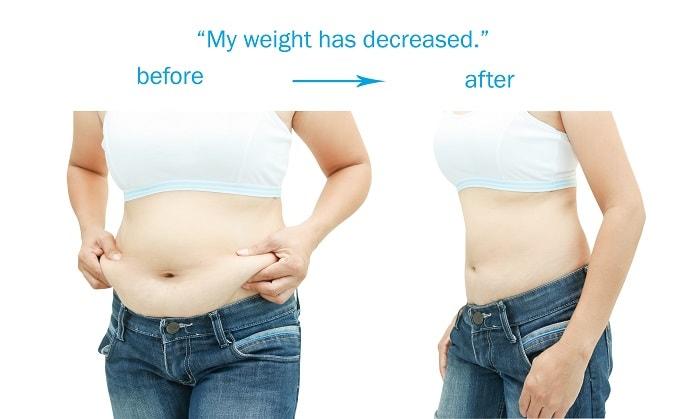
Whether, you would like to lose one stone or perhaps more, every step throughout this programme is under professional supervision and continuous support to achieve your personal goal and to help you to go beyond them in the safest and most effective way.
Jazz Alessi is a complete body transformation specialist, professional certified Nutritionist and Weight Loss Expert.

Additionally, he is a clinical exercise specialist, health rehabilitation specialist coach, professional elite personal trainer who provides personalised weight loss plans, based on your goals, challenges, possible health issues, considering your daily schedule, body needs and your personality.
Do you want to achieve your weight loss, fitness or health goals?
Do you want to train with the best?
Contact Jazz Alessi by clicking on this link now, here !
References:
1) http://www.biology-online.org/dictionary/Homeostasis
2) Elisabeth Kvaavik, PhD; G. David Batty, PhD; Giske Ursin, MD, PhD; et al. Influence of Individual and Combined Health Behaviors on Total and Cause-Specific Mortality in Men and WomenThe United Kingdom Health and Lifestyle Survey. Arch Intern Med. 2010;170(8):711-718. doi:10.1001/archinternmed.2010.76
3) Agostinis-Sobrinho C, Abreu S, Moreira C, Lopes L, García-Hermoso A, Ramírez-Vélez R, Correa-Bautista JE, Mota J, Santos R. Muscular fitness, adherence to the Southern European Atlantic Diet and cardiometabolic risk factors in adolescents. Nutr Metab Cardiovasc Dis. 2017 Aug;27(8):695-702. doi: 10.1016/j.numecd.2017.04.008
4) Monteagudo C, Dijkstra SC, Visser M.Self- Perception of Body Weight Status in Older Dutch Adults. J Nutr Health Aging. 2015 Jun;19(6):612-8. doi: 10.1007/s12603-015-0486-z.
5) https://www.mayoclinic.org/diseases-conditions/hyperglycemia/basics/symptoms/con-20034795
7) Shivalkar B, Van de Heyning C, Kerremans M, Rinkevich D, Verbraecken J, De Backer W, Vrints C. Obstructive sleep apnea syndrome: more insights on structural and functional cardiac alterations, and the effects of treatment with continuous positive airway pressure. J Am Coll Cardiol. 2006 Apr 4;47(7):1433-9.
8) Ng WL, Orellana L, Shaw JE, Wong E, Peeters A The relationship between weight change and daytime sleepiness: the Sleep Heart Health Study. Sleep Med. 2017 Aug;36:109-118. doi: 10.1016/j.sleep.2017.05.004.
9) Angelina R. Sutin, Ph.D. and Alan B. Zonderman, Ph.D. Depressive Symptoms Are Associated with Weight Gain Among Women. Psychol Med. 2012 Nov; 42(11): 2351–2360.
10) Uche Anadu Ndefo, PharmD, BCPS, Angie Eaton, PharmD, and Monica Robinson Green, PharmD, BCPS, BCACP Polycystic Ovary Syndrome. A Review of Treatment Options With a Focus on Pharmacological Approaches. P T. 2013 Jun; 38(6): 336-338, 348, 355.
11) Jordana K Schmier, Paige E Miller, Jessica A Levine, Vanessa Perez,corresponding Kevin C Maki, Tia M Rains, Latha Devareddy, Lisa M Sanders, and Dominik D Alexander Cost savings of reduced constipation rates attributed to increased dietary fiber intakes: a decision-analytic model. BMC Public Health. 2014; 14: 374.
12) http://www.med.umich.edu/1libr/Mhealthy/WhatAreEmptyCalories.pdf
13) Khan MH1, Victor F, Rao B, Sadick NS. Treatment of cellulite: Part I. Pathophysiology. J Am Acad Dermatol. 2010 Mar;62(3):361-70; quiz 371-2.
14) Rosimeri da Silva Castanho MendonÇa, Geruza Baima de Oliveira RodRigues. Major Dermatological changes in obese patients. ABCD Arq Bras Cir Dig 2011;24(1): 68-73
15) Romo A, Benavides S. Treatment options in insulin resistance obesity-related acanthosis nigricans. Ann Pharmacother. 2008 Jul;42(7):1090-4.
16) Brickman WJ , Binns HJ, Jovanovic BD, Kolesky S, Mancini AJ, Metzger BE; Pediatric Practice Research Group. Acanthosis nigricans: a common finding in overweight youth. Pediatr Dermatol. 2007 Nov-Dec;24(6):601-6.
17) http://www.euro.who.int/__data/assets/pdf_file/0003/247638/obesity-090514.pdf
18) Harvey SB, Glozier N, Carlton O, Mykletun A, Henderson M, Hotopf M, Holland-Elliott K. Obesity and sickness absence: results from the CHAP study. Occup Med (Lond). 2010 Aug;60(5):362-8. doi: 10.1093/occmed/kqq031.
19) Corinna Koebnick, PhD, Mary Helen Black, PhD, Jun Wu, MD, MS, Mayra P Martinez, MPH, Ning Smith, PhD, Beatriz Kuizon, MD,3 David Cuan, MD,4 Deborah Rohm Young, PhD, Jean M Lawrence, ScD, MPH, MSSA, and Steven J Jacobsen, PhD, MD High Blood Pressure in Overweight and Obese Youth: Implications for Screening. J Clin Hypertens (Greenwich). 2013 Nov; 15(11): 793–805.
20)Kotchen TA Obesity-related hypertension: epidemiology, pathophysiology, and clinical management. Am J Hypertens. 2010 Nov;23(11):1170-8. doi: 10.1038/ajh.2010.172
21) Subhashini Yaturu . Obesity and type 2 diabetes. Journal of Diabetes Mellitus Vol.1, No.4, 79-95 (2011) doi:10.4236/jdm.2011.14012
22) Millward DJ, Truby H1, Fox KR, Livingstone MB, Macdonald IA, Tothill P. Sex differences in the composition of weight gain and loss in overweight and obese adults. Br J Nutr. 2014 Mar 14;111(5):933-43. doi: 10.1017/S0007114513003103.
23) R L Williams, L G Wood, C E Collins, and R Callister. Effectiveness of weight loss interventions – is there a difference between men and women: a systematic review. Obes Rev. 2015 Feb; 16(2): 171–186.
24) Nielsen S, Guo Z, Johnson CM, Hensrud DD, Jensen MD. Splanchnic lipolysis in human obesity. J Clin Invest. 2004 Jun;113(11):1582-8.
25) https://www.cdc.gov/diabetes/pubs/pdf/womenhighriskdiabetes.pdf
Disclaimer: This website and all its content is to be used for information purposes only. This website or any of its content or links to third parties does not diagnose, advise, treat or cure any ailments, illness or disease.
You agree to hold harmless the owner of this site for any action taken on your own without consulting your medical doctor first by using the information on the website for diagnostic, treatment, or any other related purposes. This is not medical advice. If you are suffering from any illness, disease or ailments please contact your doctor first and immediately.



